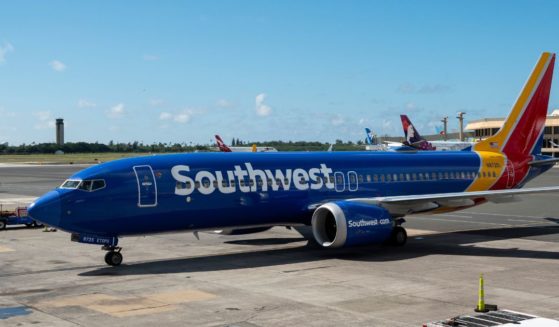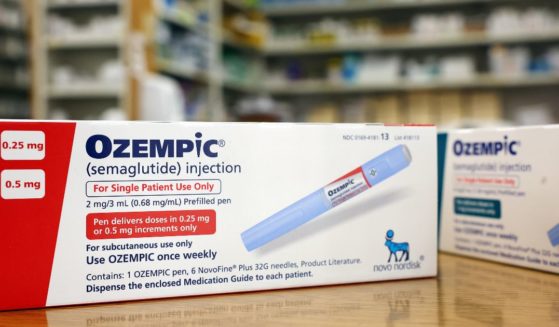The CIA Actually Has a Guide on Building Go-Bags - Here's How To Make Your Own
We’ve all seen the heartbreaking images out of California, where wildfires displaced roughly 200,000 people. It’s a human tragedy of epic proportions — and one that, if it should hit your area, you can be prepared for.
In fact, the CIA can help make sure that you’re prepared.
Yes, the CIA generally does intelligence on a foreign scale, but the nation’s top intelligence bureau issued a guide which included FEMA instructions on how to survive if you find yourself in the midst of a tragedy like the one we’re seeing in the Golden State.
“At CIA, we spend a lot of time discussing emergency preparedness and planning with our officers, who often find themselves working in all kinds of remote — and sometimes dangerous — places around the world. Often villages, towns or even cities are ill-equipped to handle major emergencies,” the CIA’s Molly Hale said in a November entry on the intelligence agency’s blog.
”What those emergencies might look like (hurricanes, earthquakes, civil unrest, violent uprisings or wildfires, etc.) can be hard to predict, but a well thought-out emergency plan, paired with regular drills and the right equipment, can put you in a better position to weather the storm, whatever form it takes.”
That includes a go-bag, sometimes referred to as a bug-out bag. Not familiar with what that is? Hale will fill you in.
“According to FEMA, people should be prepared to take care of themselves and family members for up to 72 hours, or three days, following a disaster,” she wrote.
”To do this effectively you should collect and consolidate the appropriate materials at a well-known location in your home, work or vehicle ahead of time. We recommend consolidating the items into what we call a ’go-bag,’ so named because it is a tool that is intended for use in ‘on-the-go’ situations, such as a hasty evacuation.
“As some of our officers can attest, multiple go-bags scattered throughout the house, vehicles and your workplace might be the best solution. You never know where you’ll be when disaster strikes and having a go-bag within arm’s reach can mean the difference between life and death.”
There are some basic items your go-bag should include.
First, you need the essentials. If you can carry one gallon of water per day for your use, that’s super. If not, purification tablets may be a good supplementary option. In addition to water, you’re going to need food — specifically, food that doesn’t spoil. Protein bars are one of the things the CIA recommends.
A first aid kit is also going to be a necessity in a situation like this, including your prescriptions. Hygenic supplies are also a must. A light source like a flashlight or glow sticks should also be a part of your go-bag.
Batteries are one thing you’re going to need to replenish regularly, as batteries lose their capacity with age. A cell phone with emergency numbers and a charger is also going to be something you want at a minimum. You’ll need a rechargeable power bank for your phone, but remember that this needs to be charged and monitored regularly to be effective.
Disaster plans should be kept in the bag. Keep contact numbers there, as well, along with a map that includes evacuation routes. Cash and traveler’s checks are also something you should have in your go-bag, as well as copies of your passport and other documents you might need. Keep a paper and pencil in there, as you’ll never know when you’ll need those.
You’ll need something to keep you warm as you sleep. This is where a good blanket and a few space blankets will come in handy. A change of clothes with shoes is a must, but make sure they’re not a flimsy pair of shoes. A multi-tool with screwdriver, knife, tweezers and the like will also be a necessity, as will matches or another source that can start a fire.
These need to be kept in a waterproof case; waterproof storage should also be a priority.
Finally, you’re going to need a way to to repair stuff if things go wrong. FEMA and the CIA recommend parachute cords, duct tape and safety pins.
”This is by no means an exhaustive list, but should serve as a reference as you build a more personalized list based on your needs and those of your family, as well as the specific threats or challenges you are likely to face in your part of the world,” Hale wrote.
”If, for instance, you live along the coastline, you may want to put more time/effort into waterproofing your go bag and its contents. Those living or staying in areas of earthquake activity should consider including temporary shelters and focusing on communications, as cellular towers could be impacted.”
This isn’t an exhaustive list in terms of emergency preparedness, either.
The CIA recommends an emergency preparedness plan, something Hale also discusses in her post.
However, a go-bag is a pretty good start. It’s a way to ensure that you’re prepared if one of these disasters ever befalls you.
With any luck, you’ll never have to use it.
That said, when a major hurricane like Dorian is closing in, or when an earthquake or other natural disaster hits, it’s too late to assemble what you need.
A go-bag is a step you can take today to make sure you and your family survive a disaster — and it doesn’t take much effort or money.
Truth and Accuracy
We are committed to truth and accuracy in all of our journalism. Read our editorial standards.












